 Loading... Please wait...
Loading... Please wait...Free Shipping on orders over $400
Categories
Halogen vs LED: Which Lighting is Best for Your Surgical Center
Posted on 10/19/2018 09:53:53
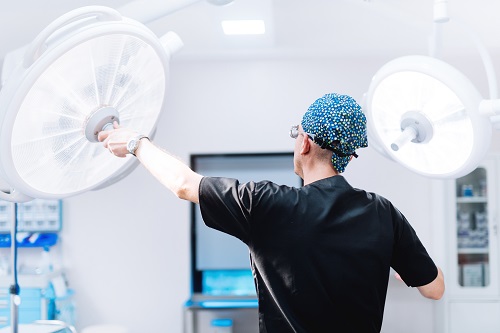
Surgical lighting for hospitals, surgical centers, and other facilities is very important in the success of surgical procedures and the surgical team’s comfort. Surgical lighting is one of the most important elements in the operating room. Your surgical team must be able to see accurately – with clear visibility, adequate brightness, minimal shadows, and no glare.
The surgical team requires a great deal of light and clear visibility when performing surgical procedures. The surgical lights you select must provide focused, bright lighting directly to the surgical site, where it’s needed most, providing your surgeons and surgical team with a clear and accurate view. Medical teams expect top performance from their medical equipment, especially surgical lights.
If you’re considering the purchase of new surgical lights for your surgical practice, here are some points to consider when choosing between LED lights vs halogen lights. Let’s take a closer look at the detailed pros and cons of halogen and LED lighting. For more help selecting surgical lights see our surgical lights buyer’s guide or contact us.
Halogen Surgical Lights
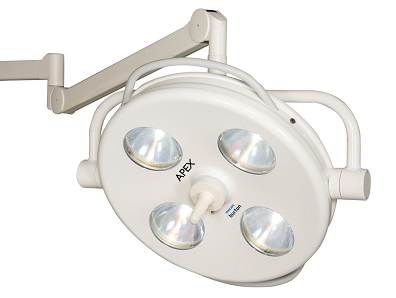
Halogen lights use a tungsten filament within the center of an encasement containing halogen gas. Passing electricity through the filament causes it to light up, just like its distant relative, the incandescent bulb used as outdoor flood lights and inside many homes. The more electricity pushed into the filament, the brighter – and whiter – the bulb burns. Additionally, the brighter the light, the more heat the halogen bulb produces.
Pros of Halogen Lights:
The cost of purchasing halogen bulbs are typically much less than their LED counterparts. However, keep in mind that this is a reference to the initial costs only. You also must consider costs associated with operating a halogen vs LED lighting system for the duration of its useful life.
Halogen bulbs are easy to discard after their life cycle. They can be placed in the trash along with your organization’s everyday waste (though you shouldn’t try to recycle them). The fine wires in the glass processing are difficult to separate, leading to high, and often prohibitive, recycling costs.
- Halogen bulbs are relatively inexpensive
- Halogen bulbs are easy to dispose
- Halogen bulbs can produce bright light
- Halogen bulbs are moderately reliable and have been used in surgical lights for many years
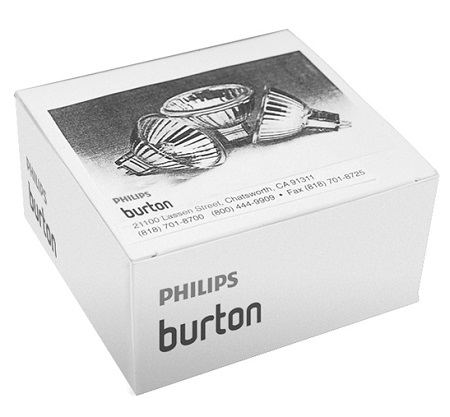
Cons of Halogen Lights:
Halogen lights typically product a hot infrared light. In order to meet the needs of your surgical team, this light must be filtered to produce a cooler white light more similar to daylight, or natural light. Overall, a halogen beam must undergo color rendering to provide a white, natural light that encourages the best visual environment.
In order for halogen lights to burn brightly, they must generate a tremendous amount of heat. This often can create an uncomfortable environment for the surgical team, who is most likely working directly under the blaze. This working environment can lead to fatigue during longer surgical procedures, increasing the risk of mistakes and errors in judgment. It can also lead to burns if a member of your team touches a halogen light that’s too hot, and can create a potentially dangerous situation if you’re dealing with highly combustible materials.
Another downside to halogen light bulbs is the necessary electricity required to maintain the lighting system. Halogen bulbs draw a significant amount of power, leading to less energy efficiency and higher monthly energy costs.
There is also the shorter bulb life to consider. Halogen lights will have to be replaced much more often than LED bulbs. In fact, it’s not unheard of for halogen bulbs to need replacing every year to 18 months, resulting in thousands of dollars in replacement costs.
Unfortunately, halogen bulbs also tend to fail without warning. Your team may find itself needing to switch out light bulbs or activate a backup light in the middle of a procedure.
Even though halogen bulbs burn out, they are relatively easy to purchase and replace. Philips has been a leading manufacturer of halogen surgical lights and while Philips halogen bulbs are still available surgical light manufactures are quickly shifting to led surgical lights.
Halogen lights typically produce hot infrared light – which must be filtered to produce a cooler white light more similar to natural light.
- Light production emits a tremendous amount of heat.
- Light production requires a significant amount of power.
- Bulb life is unpredictable and often stop working without any warning
LED Surgical Lights
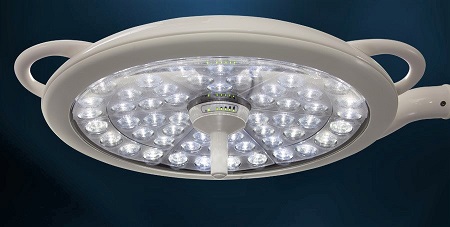
In recent years, most surgical lights have been based on halogen bulbs. Recent developments in technology have made LED (light-emitting diode) lights more accessible for surgical centers than ever before. LED technology has advanced from being something simply high tech and novel to having the potential for being a part of daily life in many operating rooms across the globe.
LED technology hinges on a single semiconductor inside either a glass or plastic housing. As electricity feeds into it, electrons become active enough to generate energy in the form of light. Like a halogen bulb, the more electricity an LED receives, the brighter the light it generates.
Pros of LED Lights
LED lights produce significantly whiter and cooler light than halogen lights. These bright lights improve visibility, and the cooler temperature helps ensure that the surgical team stays as comfortable as possible. This is especially helpful during lengthy or otherwise demanding procedures, minimizing the risk of errors or misdiagnosis. With LED bulbs, your surgical team can see truer skin pigmentation and better overall color when examining patients because they’ll be working within exceptional natural color, shadow control, and deep-cavity illumination.
LED lights generate very little heat when turned on. You can touch an LED light without fear of being burned, and you don’t have to worry about starting fires by placing combustible materials too close to your surgical lights.
When it comes to energy savings, LED lights are the clear winner. LED lights are energy efficient compared to halogen bulbs. They require significantly less power to produce light. Not only does this benefit the environment, but LED lights will also lower your total energy costs. Some manufacturers claim up to 70 percent lower energy consumption with LED surgical lights compared to traditional light sources. In addition, because LED lighting reduces the number of light bulbs in landfills and uses less energy, it is considered to be “green” technology.
LED lights also provide a much longer bulb life. You can expect decades from your LED bulbs, versus hours from their halogen counterparts. In fact, an LED surgical lamp may last up to 30 times longer than a halogen surgical lamp. Many estimates indicate that LED lights can burn up to 50,000 hours without needing replacement. That’s nearly six years between bulb replacements.
Unlike halogen bulbs, LED bulbs provide warning before failing. With proper testing and regular evaluation, LED lights will gradually wane in effectiveness, giving you plenty of notice that a light bulb needs to be replaced. You don’t have to wait for it to quit in the middle of a medical procedure.
Other benefits of LED lighting systems include versatile light dimming options. Some lights have as many as five different settings for light intensity. They are also easy to dispose of and can be placed in normal trash bins.
Pros of LED Lights:
- Bright whites
- Better light color than halogen lights
- Emit very little heat
- Energy efficiency require significantly less power to produce light
- Long life, LED lights can last 20x-30x longer than halogen lights
- LED light brightness wanes over time rather than quitting suddenly
- More options for light dimming
- Easy to dispose
Cons of LED Lights
One downside to LED lighting is upfront costs. LED bulbs are typically much more expensive than halogen bulbs, although they also last much longer and use less energy. While they offer long-term value, LED lights are a substantial investment when outfitting a new clinic or facility on a tight budget.
Regular inspections are required to test LED functionality and ensure that all LED lamps are producing the right level of light for your operating room’s needs. You’ll have to plan for this and develop an appropriate inspection and testing procedures.
- Sometimes more expensive than halogen to purchase; however, LED light prices continue to decrease
- Must plan for regular inspections
- More expensive to repair and replace the light source
LED lights vs halogen lights
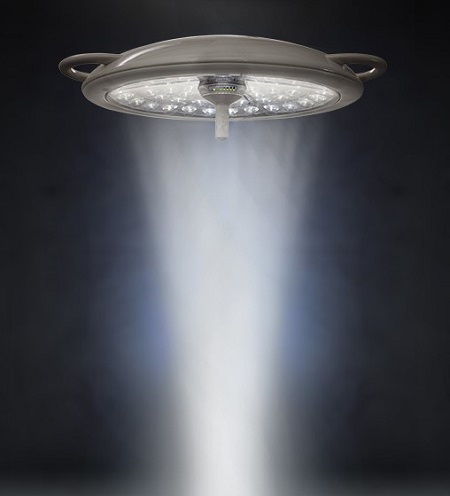
Illuminance and Light Output
Lux is the measurement of how much light lands on a surface per square meter and this is usually measured at 1m for surgical lights. A good halogen surgical light can produce around 90,000 lux and a good LED surgical light can produce over 120,000 lux.
Color Temperature
Color Temperature is the measurement of the light source’s color in comparison to an ideal light source such as full sunlight. Color temperature is measured in degrees Kelvin. Full sunlight is around 5,800 degrees Kelvin. Halogen surgical lights can produce approximately 3,700 degrees Kelvin and LED surgical lights around 4,300 degrees Kelvin.
Color Rendition
Color Rendition is the measurement of light quality. Color Rendition is referred to as the color rendering index (CRI). Color Rendition has a reference value of 100. Lights with very good color rendition have a CRI over 90. Good halogen surgical lights and LED surgical lights can produce a CRI 95-97 with LED lights usually a little higher than halogen lights.
Energy Efficiency
Power usage varies by the surgical light model. In general, a LED light uses up to 50%-75% less electricity than halogen lights.
Longevity
Light longevity is extremely important because the surgical team does not want a light going out during a surgical procedure. Some halogen lights are rated 1,000 – 1,400-hour average bulb life. LED lights are rated much higher, a good LED surgical light with have an estimated50,000-hour rating.
Additional questions on halogen vs led lights
Are halogen and LED bulbs interchangeable?
That depends on several factors. In general, if the LED light was made to fit into a standard size socket that a halogen light fits into it will work. Surgical light halogen bulbs and surgical light LEDs are not interchangeable.
What's best halogen or LED?
For many applications, especially surgical and exam light, LED lights are typically better.
Is halogen or LED brighter?
Some halogen lights can produce bright light; however, in many situations LED lights are brighter
Which Type of Surgical Lighting is Best for Your Medical Center?
As the purchaser of surgical lighting for your hospital or surgery center, you must ultimately make this decision regarding halogen vs LED lighting systems. The important thing is to research your surgical lighting options and to understand the needs and preferences of your surgical team as well as address any administrative budgetary concerns.
Above all, you’ll want to discuss varies surgical light options with your medical staff. Because surgical lights and exam lights are critical medical equipment times, it’s best to collaborate with the medical team before making a purchase. It’s important to make sure you have a good idea of exactly what kinds of procedures are typically performed, along with the personal preferences of doctors, nurses, and staff. For example, many operating rooms used for open surgery are now also repurposed for laparoscopic, endoscopic or other minimally invasive procedures. Surgical lighting needs to be flexible in order to adjust to those varying needs – once you have a firm grasp of all of these factors, you can make the best decision regarding halogen vs LED.
Hopefully, this discussion of halogen vs LED can provide you with the facts you need to make a well-researched and informed decision for your hospital, clinic, or medical facility. For more information read our surgical lights buyer’s guide.
Other Types of Surgical Lights
Xenon Surgical Headlamps
Many surgical teams use headlamps during procedures. Historically, these headlights have been powered by Xenon bulbs, which came with their own set of complications. Like traditional halogen and incandescent lamps, Xenon bulbs could burn very hot, creating a challenging situation for the surgeon and patient alike.
The burning of Xenon headlights also generates a tremendous amount of noise, which can create a distraction during procedures. Because a fiber optic wire connects the bulb to its power source, someone in the operating room must continually monitor the wire’s position relative to the patient and surgical team in order to prevent potential burns.
Today, LED headlight bulbs have largely replaced Xenon bulbs. There is an increasing demand for surgical LED headlights because they burn quietly and without heat, providing a safer and more economical solution.
Metal Halide Lights
Metal halide bulbs are another surgical lighting option – they produce light by passing electricity through mercury and metal halide gas combined. They are more efficient than halogen bulbs and generate a higher quality light. But they do take a long time to warm up and cool down – you can’t just switch them on and off, which means you have to carefully plan exactly when and where you will need the light. They are also less energy efficient and can carry a higher lifetime cost than comparable LED light bulbs.
Metal halide replacement bulbs and still available to purchase. Some metal halide bulbs may require a special order and longer delivery times. In recent years manufactures have reduced their metal halide surgical light models or stopped making them all together and replacing them with LED surgical lights.
Choosing the Right Surgical Lighting
Both halogen and LED lighting systems have certain advantages and disadvantages. LED lights last longer, generate less heat, and are more energy efficient. However, the upfront costs of an LED lighting system are much greater than a halogen lighting system. For more guidance on purchasing surgical lights, read our surgical lights buyer’s guide or call us at 1-866-561-2380 or Contact Us.



